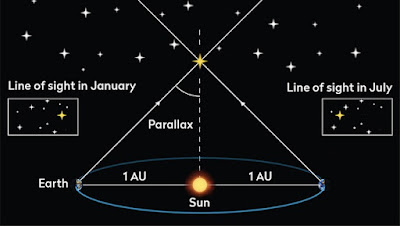The vast expanse of space has always fascinated humanity. From the earliest times, people have looked up at the stars and wondered what was out there. However, it wasn't until the development of modern astronomy that we were able to gain a better understanding of the universe beyond our own planet. One of the key challenges facing astronomers has been measuring the vast distances involved. In this article, we'll take a closer look at how scientists measure distance in space.
Before we get into the details, it's important to understand just how vast the distances involved are. Our own solar system alone is enormous, with the distance between the Earth and the Sun being around 150 million kilometers. Beyond our own solar system, the distances involved become truly mind-boggling. The nearest star to our Sun, Proxima Centauri, is around 4.24 light-years away, which is equivalent to around 40 trillion kilometers.
So, how do scientists go about measuring distances in space? There are a number of techniques that are used, each of which is suited to different distances and situations.
Another technique that is used to measure distances in space is known as spectroscopy. This involves analyzing the light emitted by an object and looking for patterns known as spectral lines. These lines can tell us a great deal about the object, including its composition, temperature, and velocity. By studying these spectral lines, astronomers can determine the distance to an object based on its brightness and size.
A third technique that is used to measure distances in space is known as the standard candle method. This relies on the fact that certain types of objects, such as certain types of stars or supernovae, always have a predictable brightness. By measuring the apparent brightness of one of these objects, astronomers can calculate its distance based on how much its light has dimmed over the vast distances of space.
In recent years, another technique has emerged that has revolutionized our understanding of the universe. This is known as gravitational lensing and is based on the fact that massive objects, such as galaxies, can bend and distort the path of light passing near them. By observing the way in which light from distant objects is bent and distorted by intervening objects, astronomers can calculate the distance to those objects.
In conclusion, measuring distances in space is a complex and challenging task. Astronomers use a range of techniques, each of which is suited to different distances and situations. Whether it's parallax, spectroscopy, the standard candle method, or gravitational lensing, these techniques have enabled us to gain a better understanding of the vast distances and structures that make up our universe.




.jpg)



0 comments:
Post a Comment